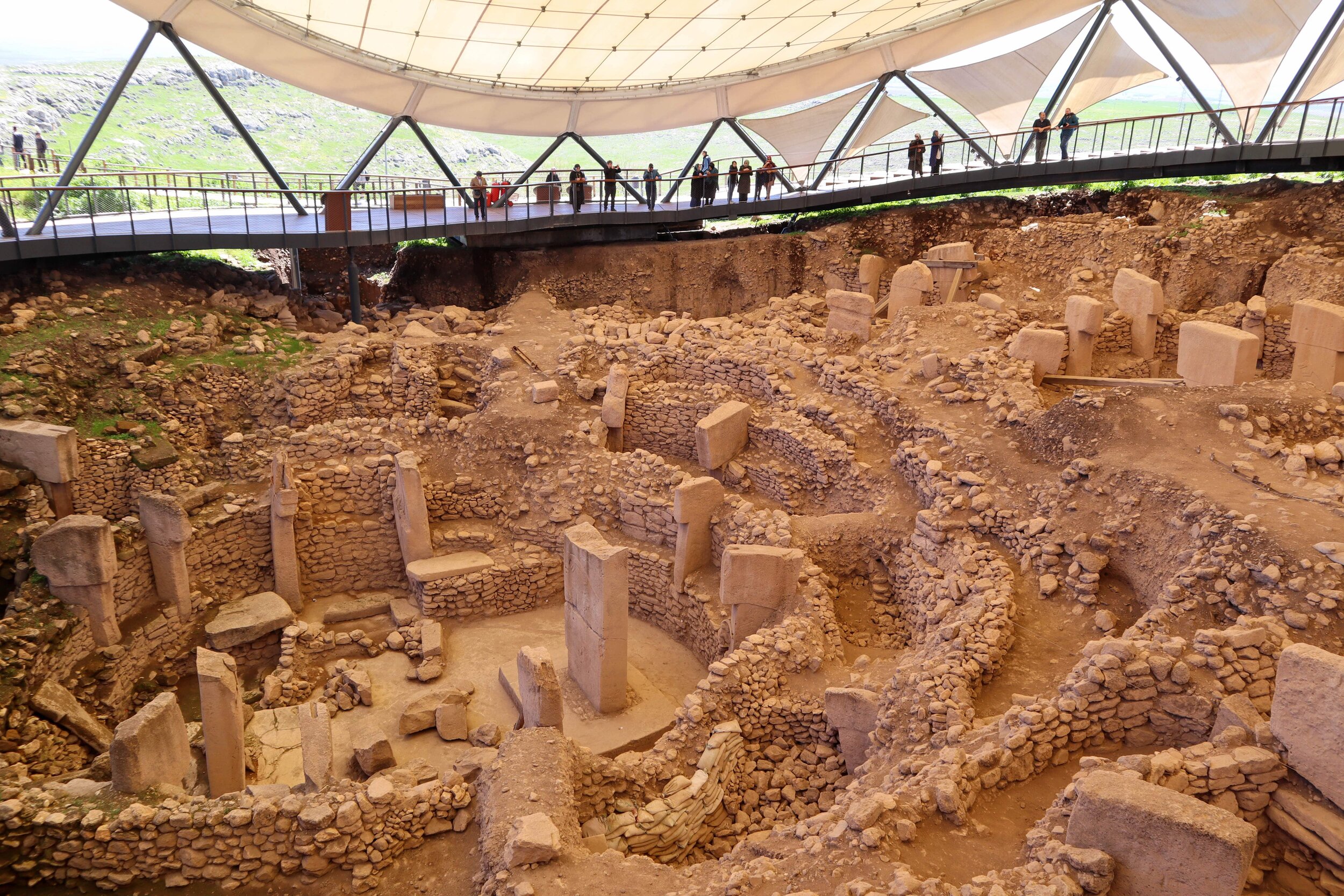Göbeklitepe: The World's Oldest Temple
Do you remember the Microsoft desktop wallpaper that had the really grand picture of Stonehenge? I thought that was fascinating as a kid and always wanted to visit. Thankfully I had my opportunity to see Stonehenge and at that point in my life it was the oldest thing I had ever seen. However, after my trip to Göbeklitepe (go-beck-lee-tay-pay), an ancient site in southeast Turkey about 30 minutes away from the city of Şanlıurfa, Stonehenge lost its oldest-thing-I-have-ever-seen title. Stonehenge was constructed in 3000 BC. Göbeklitepe was constructed around 10,000 BC. For those of us who aren’t math scholars that means that Göbeklitepe is 6,000 years older than Stonehenge. Now that’s old!
The site itself is situated in an area known as the Fertile Crescent. As I approached the site positioned on this expansive plain I was struck by the magnificence of the view. As far as the eye could see was field after field awash with shimmering reflections of green, amber, and gold. Much like standing on the top of a tall mountain or being on a boat in the middle of the sea makes one feel small, this moment among these stretching plains awoke feelings of insignificance. I was one leaf in a forest.








In the middle of all of this flatness is a mound and this is the archeological site of Göbeklitepe. According to people much smarter than me, ancient sites are usually in the shape of mounds or hills because the inhabitants of these places would build on top of collapsed structures. Over time this would result in the area being on a higher plane than the areas surrounding it. That logic seems solid to me.
The road between the main building and the archaeological site is about a 15 minute walk all uphill. Being the lazy human that I am I chose to take the shuttle service offered by the site. (Maybe I can redeem myself a little and let you know that I did walk back down the hill.)
According to archeologists this site predates the use of metal chisels or hammers. The people who built this temple probably used flint tools. Perseverance is usually the word that comes to mind when I reflect on ancient peoples building monumental structures with what I consider basic tools. Even if they had “only” used metal chisels and hammers the T-shaped pillars placed in circles with animal-like creatures carved into the stone would still be impressive. Archeologists say only about 5% of the site has been excavated, so who knows what treasures are underground waiting to be discovered.












Because of the way the site is arranged and because of the discovery of many animal bones researchers think that Göbeklitepe was used for worship and sacrifice, making it the oldest temple discovered in the world so far. As I stood atop the mound and gazed at the limestone monoliths and then the surrounding plains I had many questions in my mind: Where did the people live that came to this site? Why did they choose to build here? Why did they go to such lengths to have a place to worship and sacrifice? Whom did they worship? What did they value most in the world?
Read More
Check out these articles below to discover other adventures located near Göbeklitepe:
Şanlıurfa: The City of Abraham's Birth
Harran: Abraham and Star Wars Houses
Minorities in Turkey: Syriac Orthodox Christians
Dara: Ancient City Turned Playground
TO OUR FRIENDS IN THE WEST, KEEP LOOKING EAST!
Leslie Connors
Leslie is a co-founder of West2East. Originally from Tennessee, Leslie has called Turkey home for the past eight years. To read more about her, click here.









